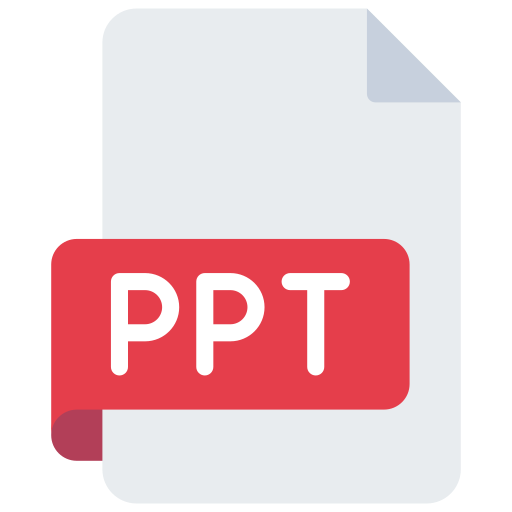Computer Language
A computer language is a structured language used to write instructions that can be executed by a computer to perform specific tasks. There are several types of computer languages, including machine language, assembly language, high-level programming languages (such as Python, Java, C++, etc.), and markup languages (such as HTML, XML, etc.). Each language has its own syntax, rules, and unique features, and the choice of language often depends on the intended use and the experience of the programmer.
| Name Of The Post | Computer Language |
| Type Of Post | Computer Theory |
| Help For | All Competitive Exam |
| Free Download |
Table of Contents
Type of computer language
There are several types of computer languages, including:
Machine language: This is the lowest-level language that can be executed directly by a computer’s central processing unit (CPU).
Assembly language: This is a low-level language that uses mnemonics to represent the machine language instructions.
High-level programming languages: These are programming languages that are easier for humans to read and write, such as Python, Java, C++, C#, etc. They are translated into machine language by a compiler or interpreter.
Scripting languages: These are high-level programming languages that are used for scripting, such as JavaScript, Perl, PHP, etc.
Markup languages: These are used for describing the structure and content of a document, such as HTML, XML, etc.
Query languages: These are used for querying databases, such as SQL.
Natural language processing (NLP) languages: These are used for programming computers to understand and process human language, such as Prolog.
The choice of language depends on the intended use, the available resources, and the experience of the programmer.
Machine language
Machine language, also known as machine code or assembly language, is a low-level programming language that consists of binary instructions that can be executed directly by a computer’s central processing unit (CPU). Machine language is the only language that the computer can understand and execute natively, but it is not human-readable and is difficult for humans to write and debug.
Each machine language instruction corresponds to a specific operation that the CPU can perform, such as addition, subtraction, comparison, etc. Machine language is specific to a particular type of CPU, so code written in machine language for one type of CPU will not work on another type of CPU.
Assembly language was created to make it easier for humans to write code for the computer by using mnemonics to represent the machine language instructions. The assembly language code is then translated into machine language by an assembler.
Assembly language:
Assembly language is a low-level programming language that is used to write programs for computer systems. It is a symbolic representation of the machine language that is executed by a computer’s central processing unit (CPU). Unlike high-level programming languages, assembly language is close to the underlying hardware and provides a programmer with more control over the system’s hardware and performance.
Assembly language instructions are mnemonics that correspond to specific machine language instructions, making it easier for humans to read and write than machine language. Assembly language programs must be translated into machine language by an assembler before they can be executed by the computer.
Assembly language is still used today in some specialized applications, such as operating system development, device driver development, and low-level system programming. However, it is less commonly used than higher-level programming languages because it requires a deeper understanding of the underlying hardware and is more difficult to write, read, and debug.
High-level programming languages:
High-level programming languages are programming languages that are designed to be easier for humans to read, write, and understand than low-level programming languages such as assembly language or machine language. They provide a higher level of abstraction from the underlying hardware and are more user-friendly, making them ideal for a wide range of applications.
Some examples of high-level programming languages include:
Python: a high-level, interpreted language used for a wide range of applications, from web development to scientific computing.
Java: a high-level, object-oriented language that is widely used for developing large-scale enterprise applications.
C++: a high-level, object-oriented language that is widely used for system programming, game development, and other performance-critical applications.
C#: a high-level, object-oriented language that is widely used for developing Windows applications and games.
JavaScript: a high-level, interpreted language used primarily for client-side web development
These languages use a syntax that is closer to human language and include features such as variables, functions, loops, and conditional statements, making them easier to use and understand than low-level programming languages. They are translated into machine language by a compiler or interpreter before they can be executed by the computer.
Important Terms Used in Computer Languages
Here are some important terms used in computer programming languages:
Syntax: The rules and structure of a programming language that determine how code should be written.
Variables: A named storage location in a program that can be used to store and manipulate data.
Data Types: The type of data that can be stored in a variable, such as integer, float, string, etc.
Operators: Symbols that perform operations on variables, such as addition (+), subtraction (-), etc.
Expressions: A combination of variables, operators, and values that evaluate to a single value.
Functions: A named block of code that performs a specific task and can be reused throughout a program.
Loops: A control structure that allows code to be executed repeatedly until a certain condition is met.
Conditional Statements: A control structure that allows code to be executed only if certain conditions are met.
Arrays: A data structure that stores a collection of values under a single name.
Pointers: A memory address that points to a specific location in memory where data is stored.
Objects: A data structure that combines data and behavior (functions) into a single entity.
Classes: A blueprint for creating objects that defines the structure and behavior of a particular type of object.
These terms are commonly used in many programming languages and understanding them is important for writing and understanding code in any language.
interpeter
An interpreter is a type of computer program that executes code written in a programming language. It reads the code, line by line, and directly executes the instructions as it encounters them, without the need for a separate compilation step.
Interpreters are typically used for dynamically typed languages, such as Python, Ruby, or JavaScript, where the type of a variable is determined at runtime. They allow for a faster development cycle, since changes can be tested and run immediately, without the need for a separate compile step.
Compiler
A compiler is a type of computer program that translates code written in a high-level programming language into machine language (binary code) that can be executed by a computer’s central processing unit (CPU).
Compilers are typically used for statically typed languages, such as C, C++, or Java, where the type of a variable must be known at compile time. They offer the advantage of faster execution speeds, since the code is translated into machine language before it is executed.
The compilation process consists of several stages, including lexical analysis, syntax analysis, code generation, and optimization. The compiler checks the code for syntax and semantic errors and generates an executable file that can be run on the target platform.
One of the main advantages of using a compiler is that it catches errors in the code early, before the program is executed. This makes it easier to identify and fix problems, resulting in more reliable and efficient code.
Function of computer language
A computer programming language is a tool used by developers to create instructions for a computer to execute. The main functions of a computer programming language include:
Abstraction: A programming language allows developers to write code that is abstracted from the underlying hardware, making it easier to write, read, and understand.
Problem Solving: Programming languages provide a means to describe solutions to problems in a way that a computer can understand and execute.
Automation: Programming languages allow developers to automate repetitive tasks, freeing up time for more complex problem-solving.
Data Processing: Programming languages allow developers to process and manipulate data in a variety of ways, including data storage, retrieval, and analysis.
Interaction: Programming languages allow developers to create interfaces for users to interact with a computer program.
Reusability: Functions, libraries, and modules can be written and reused in multiple programs, making it easier to write code and reduce development time.
Concurrency: Programming languages allow developers to write code that can run concurrently, making it possible to create efficient, multi-threaded applications.
Security: Programming languages provide tools and constructs that help developers to write secure code and prevent potential security vulnerabilities.
What is a computer language?
A computer language is a set of instructions that a computer can understand and execute. These instructions are used to create programs, which are sets of instructions that tell a computer what to do.
What are the different types of computer languages?
There are several types of computer languages, including: High-Level Languages, Low-Level Languages, Scripting Languages, Markup Languages.
Overall, computer programming languages are a powerful tool for solving complex problems, automating repetitive tasks, and creating user-friendly applications. They provide a means to describe solutions to problems in a way that a computer can understand and execute, making it possible to create a wide range of applications and software.



















